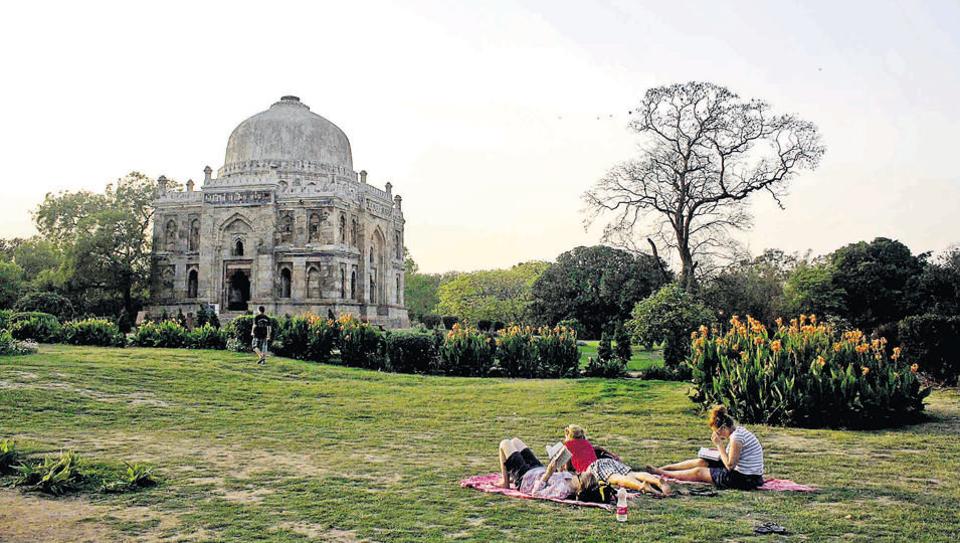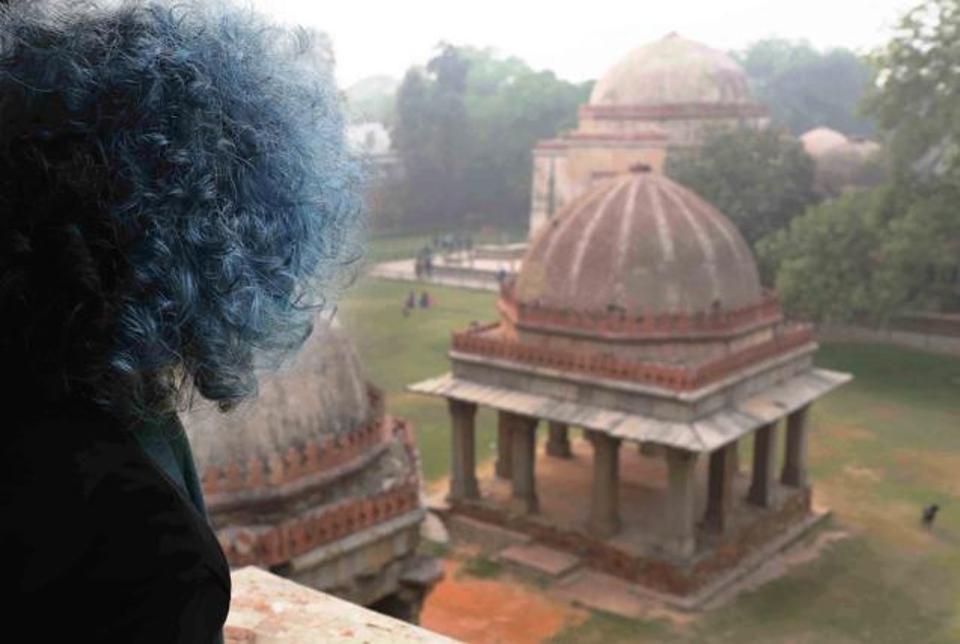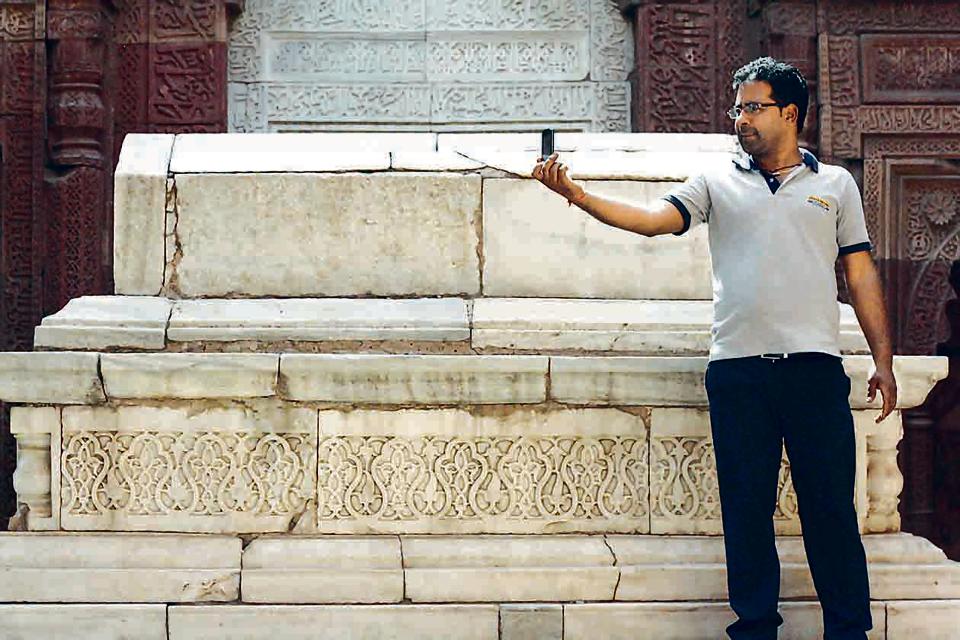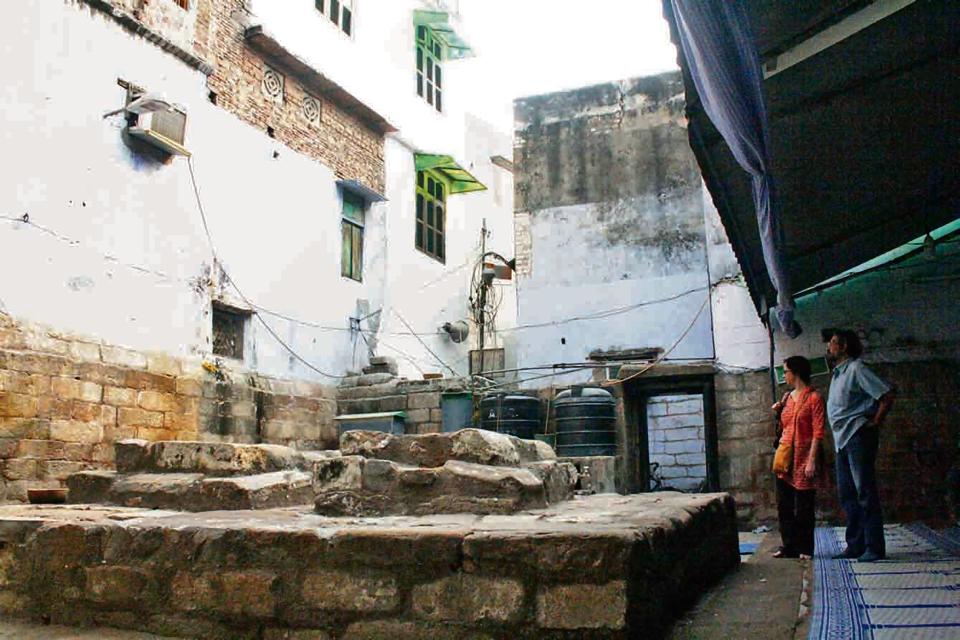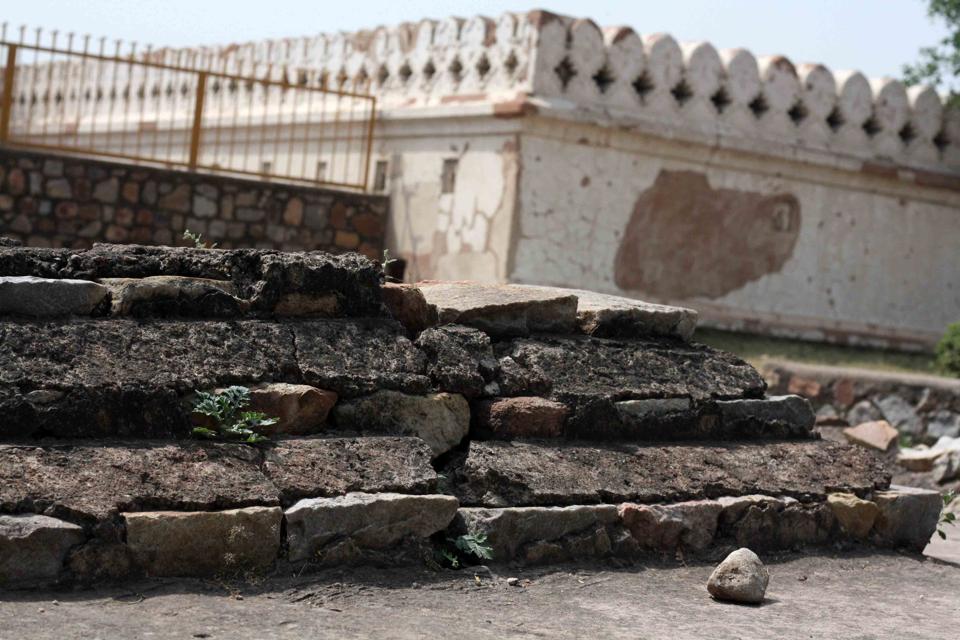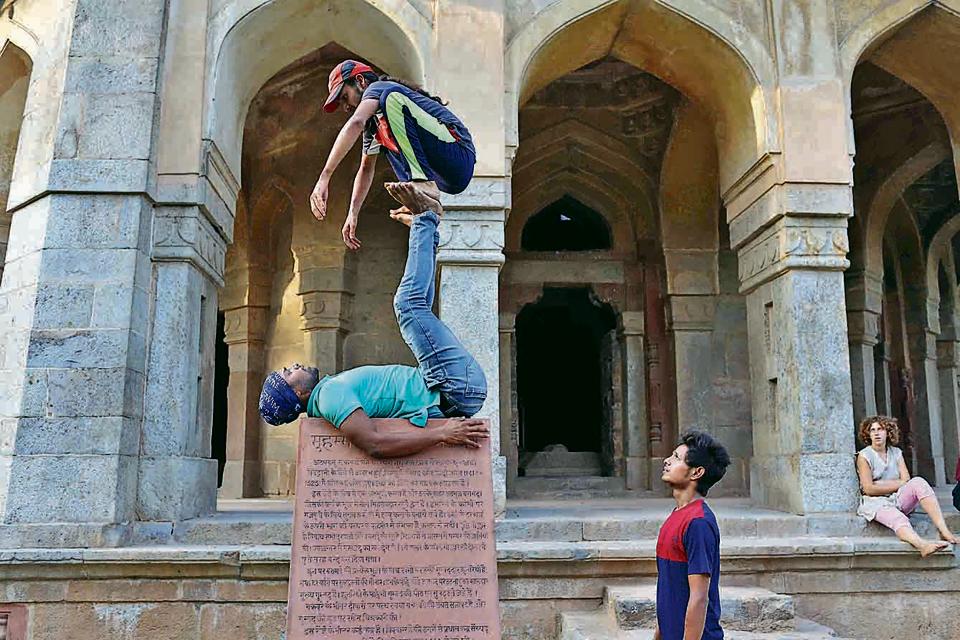NEW DELHI :
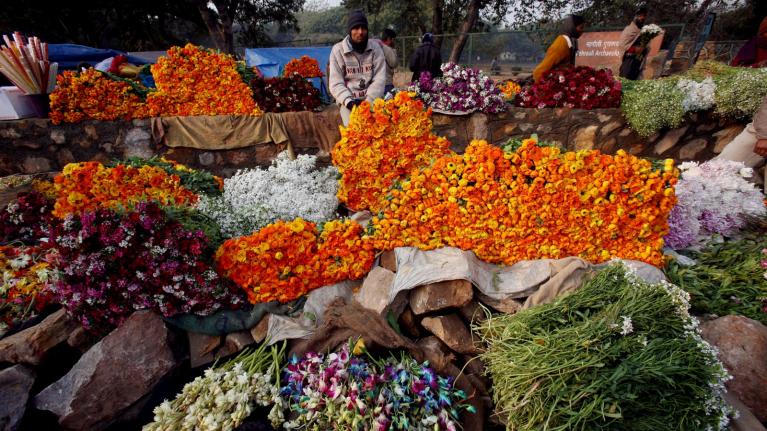
EPA/MONEY SHARMA
In 1859, Delhi’s most famous poet, Mirza Asad Ullah Ghalib, was asked what Delhi was like these days. He replied: “My friend, what a question to ask! Five things kept Delhi alive—the Fort, the Chandni Chauk, the daily crowds at the Jama Masjid, the weekly walk to the Jumna bridge, and the yearly fair of the flower men. None of these survives, so how could Delhi survive?” Ghalib’s despondency notwithstanding, the fair celebrating the monsoon, known as the Phulwalon ki sair or the Sair-e gulfaroshan, started again soon after the turmoil of the Revolt had died down and has survived until the present day.…
What makes the Phulwalon ki sair such a fascinating topic for the exploration of monsoon feelings is the density and variety of commentary it brought forth over the last two hundred years. These sources range from colonial reports to the no less matter-of-fact newsletters from the Mughal court. They include memoirs and essays recalling the world lost in 1857, and texts which depicted contemporary experiences up to the present day. Songs and poems were often included in other texts, but we also have a printed poem from 1876, which praises the joys of the Phulwalon ki sair and was probably meant to be performed during the festival. Together they present a rich image from which we can reconstruct many of the basic facts of the festival, such as who the people were who went to Mehrauli and what they did there. But the sources go further. They allow us an insight into the meaning different participants ascribed to the festival, and even into their emotions. Together they help us understand why Ghalib deemed the festival so important, not only for the identity but for the very survival of Delhi.
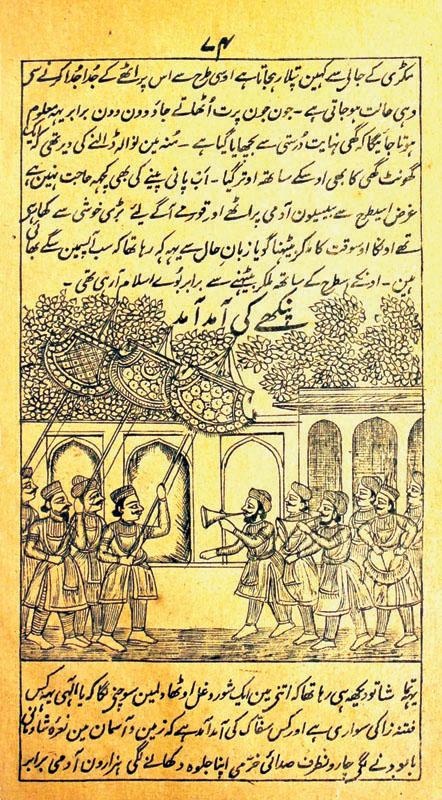
The earliest references to the processions can be found in the newsletters from the royal court for 1830. Akbar Shah and his entourage moved to Mehrauli in late July and instructed the flower-sellers to get the pankhas ready for the ceremony at Qutb ud-Din’s dargah. Every day, “His Majesty went to the jharnawith the ladies. He sat in the barahdari, enjoyed the view of the jharna and the bathing of the ladies. They sat on the swing and sang.” Akbar Shah also enjoyed sitting on the platform above the gate of his palace, from where he could watch the bustle of the bazaar and the performance of acrobats. It is from there that he watched the procession of the flower-sellers and the fair, for which numerous crowds of people had gathered.
…
Fazl ud-Din described the traditional references to shringara rasa, the clouds, the peacocks, and the koyals, the lushness of the hills and trees that had recovered their greenery, the flowers that burst into bloom, the mangoes and jamuns which were so abundant that they fell from the trees before people could pluck them. This revelry brought together the nobility and the common people, Fazl ud-Din pointed out, the rich and the poor, the owners of shops and the bazaris: no one was left behind in the empty city of Delhi. All the houses were decorated and the food was rich and plenty, while the rain continued to drizzle softly. The emotional experience was mediated through the senses of sight, of touch and of taste, but equally important were the sounds of the festival, the calling out of the shopkeepers, the songs of the ladies, and the musicians accompanying the processions, mainly nafiri trumpets, shahnais and a large variety of drums. Other texts also invoked the presence of an entire naubat, travelling on an open platform.
In Fazl ud-Din’s account, the emotions came to a culmination during the procession, which moved to the temple of Jogmaya on the first day and to the dargah of Qutb Sahib on the second day. The procession was led by the royal musketeers, followed by different professional groups. At the centre, right next to the elephants of the princes, were the flower-sellers and their pankhas, ornamented with a thousand flowers:
Look how packed the street is! People are falling over each other. A sweet drizzle is falling, and a cool wind is blowing. The bleating sound of the nafiris blares loudly. The pleasant forest and the crowd of people! In the evening the pankhas reach the royal palace with a lot of commotion.
…
By the beginning of the twentieth century, the tone of the writings changed. The new generation of authors no longer had a personal experience or even memory of the festival, even before it was discontinued after the first non-cooperation movement. In 1906, we find one Saiyid Bunyad Husain from Aligarh College, writing an article for the ladies’ magazine Khatun. He praised the Phulwalon ki sair as an extraordinary festival without equal, except perhaps for one festival, which takes place every year in Paris, but his knowledge is sketchy. He mused about possible origins of the festival: as it symbolised luxury and pleasure, ‘aish o ‘ishrat, he rules out the later Mughals, as theirs was a period of decline, and finally settled on Muhammad Shah as the probable initiator, as he was known for being inclined to sensual pleasures.
…
The festival at Mehrauli lost its specific anchoring in a time and place and became a symbol for a world that had been lost. The emotions that matter were no longer those of the participants in the procession and the revelries, but the communion of sentiment created between the author and his readers. This changed the tone.
…
A Symbol of National Unity
Nostalgia might have had a critical potential, but a nostalgia that was looking back to the last days of the Mughals and was geared towards a critique not only of colonialism but of modernity seemed increasingly out of tune, certainly with Jawaharlal Nehru’s vision of what independent India would stand for. And still, it was Nehru who in 1961 suggested the revival of the festival, which had been stopped in 1921. He called together a group of influential citizens and public figures from Delhi, who inaugurated the first festival after independence in 1962. What had changed?
The beginning of the 1960s was the period when the new nation increasingly faced the challenges of poverty, internal disruptions and conflicts, between religious communities but also between language groups and states. In this situation “emotional integration,” a felicitous phrase created by Nehru, became the rallying cry:
Political integration has already taken place to some extent, but what I am after is something much deeper than that—an emotional integration of the Indian people, so that we might be welded into one, and made into one strong national unit, maintaining at the same time all our wonderful diversity.
As a festival that was jointly celebrated by Hindus and Muslims, which had already been read as a symbol of Delhi’s tolerance and cosmopolitanism, the Phulwalon ki sair offered vast symbolic potential, and has been patronised by almost all prime ministers since Nehru. Many are the presidents of the republic who have come to deliver speeches at its inaugural function or at least sent messages of support, while the administrative elite of Delhi has always been involved in the planning of the festival and many have participated in some function or other during its three days.
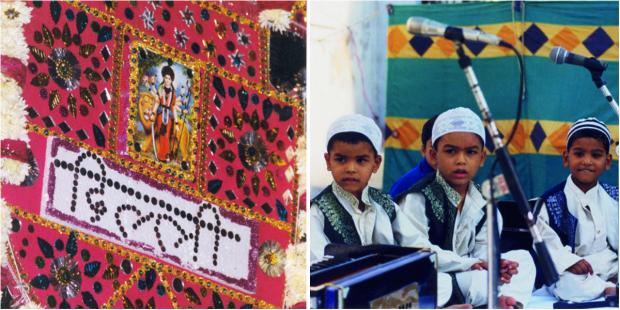
The festival, especially during its heyday in the nineteenth century, was an intensive experience for those who participated, involving all the senses at the same time. The eyes saw the beauty of the blossoms and the greenery of the forest, the alluring sight of the ladies and courtesans displaying their fineries and frolicking around the jharnaand the lakes, the decoration of the bazaars, the lights in the evening and the fireworks. The ears heard the calls of the birds associated with the monsoon, the koyal and the peacock foremost among them, but also the songs of the ladies, the blaring of the nafiris and the resounding drums. The skin felt the relief of the cooling drizzle of rain, the embrace of the beloved, the closeness of other bodies during the procession; the tongue relished the abundance of mangoes and the delicacies prepared in the bazaar; the nose took in the smell of rain on the scorched earth, the perfume of the flowers, and the aroma of the food.
…
Looking at the procession over a time span of almost two hundred years also brings out the close relation of emotions and politics—even in this case, which at first sight involved nothing more than coming together to enjoy the rainy season. The Phulwalon ki sairalways was (also) a political statement, though these of course changed through time.
Excerpted with the permission of Niyogi Books from Monsoon Feelings A History of Emotions in the Rain, edited by Imke Rajamani, Margrit Pernau, and Katherine Butler Schofield. We welcome your comments at ideas.india@qz.com.
source: http://www.qz.com / Quartz India / Home> Phulwalon Ki Sair / by Margrit Pernau / July 13th, 2018
